Hong-Wing Pang
Locally Stylized Neural Radiance Fields
Sep 19, 2023

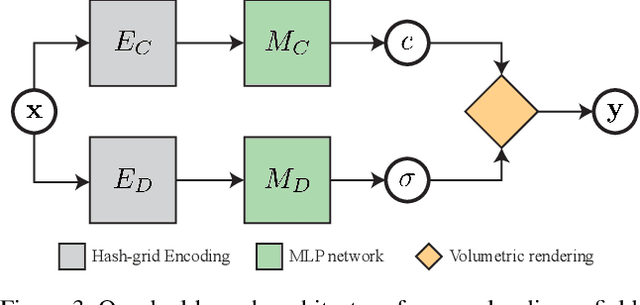

Abstract:In recent years, there has been increasing interest in applying stylization on 3D scenes from a reference style image, in particular onto neural radiance fields (NeRF). While performing stylization directly on NeRF guarantees appearance consistency over arbitrary novel views, it is a challenging problem to guide the transfer of patterns from the style image onto different parts of the NeRF scene. In this work, we propose a stylization framework for NeRF based on local style transfer. In particular, we use a hash-grid encoding to learn the embedding of the appearance and geometry components, and show that the mapping defined by the hash table allows us to control the stylization to a certain extent. Stylization is then achieved by optimizing the appearance branch while keeping the geometry branch fixed. To support local style transfer, we propose a new loss function that utilizes a segmentation network and bipartite matching to establish region correspondences between the style image and the content images obtained from volume rendering. Our experiments show that our method yields plausible stylization results with novel view synthesis while having flexible controllability via manipulating and customizing the region correspondences.
Conditional 360-degree Image Synthesis for Immersive Indoor Scene Decoration
Jul 18, 2023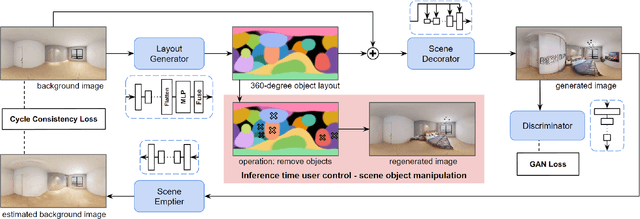
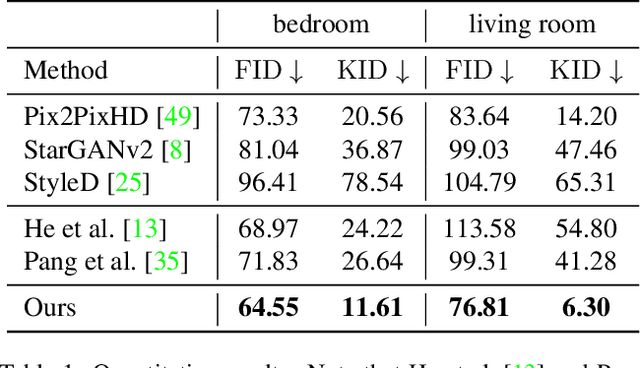

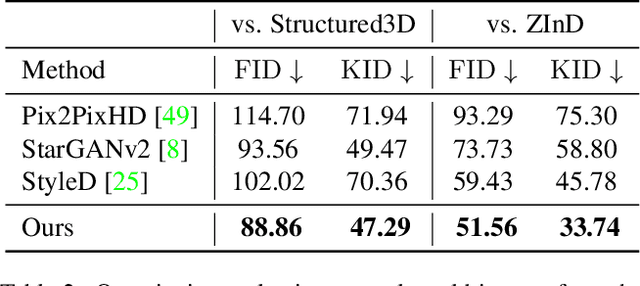
Abstract:In this paper, we address the problem of conditional scene decoration for 360-degree images. Our method takes a 360-degree background photograph of an indoor scene and generates decorated images of the same scene in the panorama view. To do this, we develop a 360-aware object layout generator that learns latent object vectors in the 360-degree view to enable a variety of furniture arrangements for an input 360-degree background image. We use this object layout to condition a generative adversarial network to synthesize images of an input scene. To further reinforce the generation capability of our model, we develop a simple yet effective scene emptier that removes the generated furniture and produces an emptied scene for our model to learn a cyclic constraint. We train the model on the Structure3D dataset and show that our model can generate diverse decorations with controllable object layout. Our method achieves state-of-the-art performance on the Structure3D dataset and generalizes well to the Zillow indoor scene dataset. Our user study confirms the immersive experiences provided by the realistic image quality and furniture layout in our generation results. Our implementation will be made available.
Neural Scene Decoration from a Single Photograph
Aug 04, 2021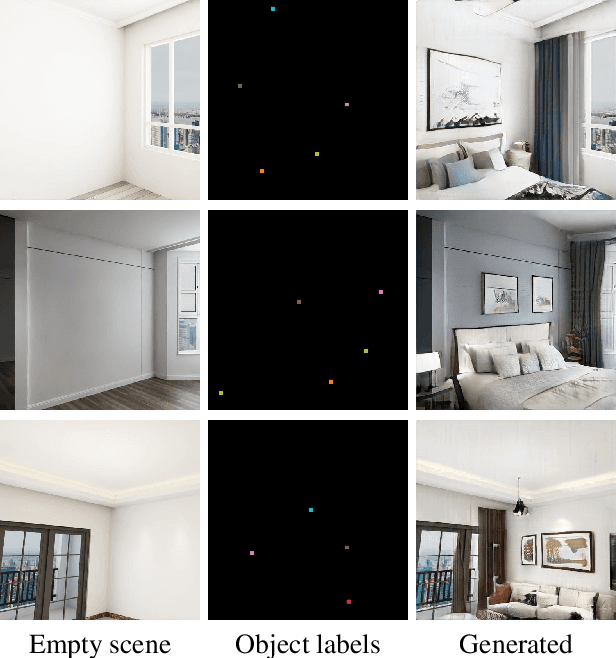
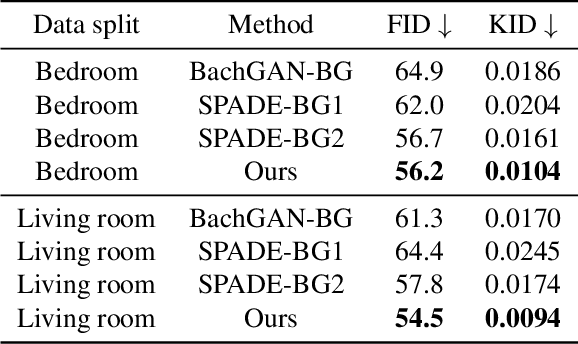
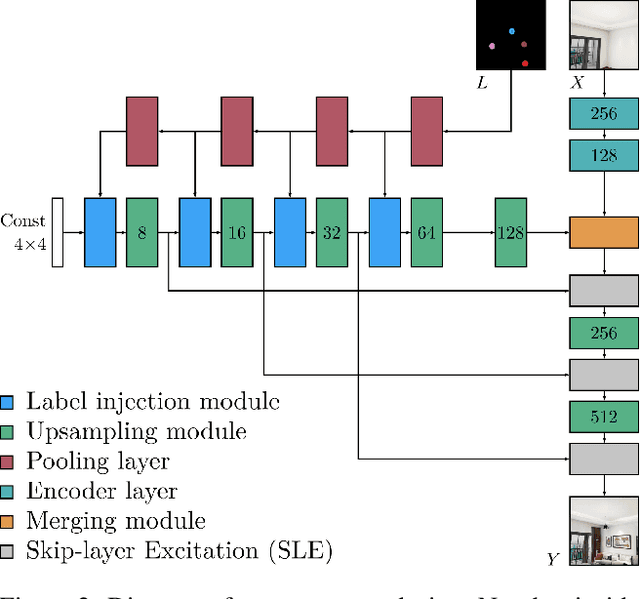
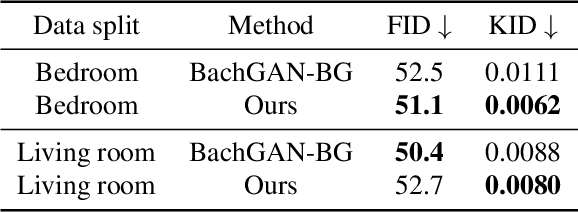
Abstract:Furnishing and rendering an indoor scene is a common but tedious task for interior design: an artist needs to observe the space, create a conceptual design, build a 3D model, and perform rendering. In this paper, we introduce a new problem of domain-specific image synthesis using generative modeling, namely neural scene decoration. Given a photograph of an empty indoor space, we aim to synthesize a new image of the same space that is fully furnished and decorated. Neural scene decoration can be applied in practice to efficiently generate conceptual but realistic interior designs, bypassing the traditional multi-step and time-consuming pipeline. Our attempt to neural scene decoration in this paper is a generative adversarial neural network that takes the input photograph and directly produce the image of the desired furnishing and decorations. Our network contains a novel image generator that transforms an initial point-based object layout into a realistic photograph. We demonstrate the performance of our proposed method by showing that it outperforms the baselines built upon previous works on image translations both qualitatively and quantitatively. Our user study further validates the plausibility and aesthetics in the generated designs.
 Add to Chrome
Add to Chrome Add to Firefox
Add to Firefox Add to Edge
Add to Edge